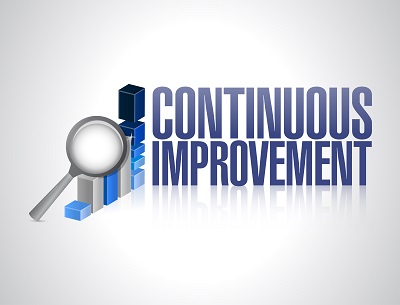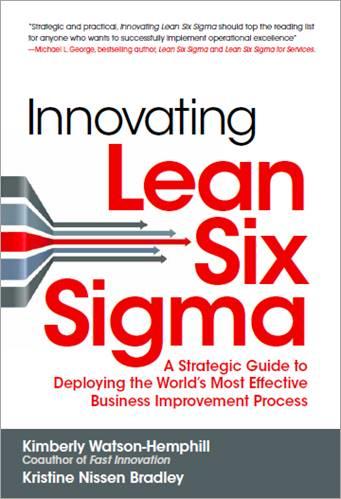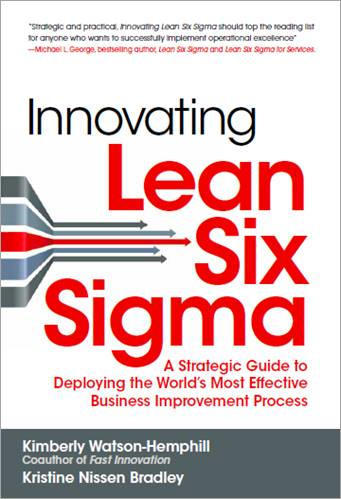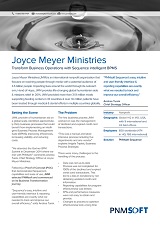Home / Resources
Resources
Discover a Wealth of BPM Knowledge and Expertise at BPMInstitute.org!

The BPM-Discipline: The Strategy Execution Engine for the Digital World
As a recent research study of The Gartner Group shows , only 13% of business meets their strategic goals [1]. This means 87% of organizations prepare strategic plans and related objectives —but they don’t deliver on their strategy, at least not fully. This situation will get even more challenging with the intensifying digitalization and the adjustment of strategies to this trend. Less than 1% of companies have prepared their business processes to realize the potential of our digital world according to the same study. Hence the risk of not executing successfully on a business strategy incorporating the opportunities of digitalization becomes even higher. A just release study by BPM-D, Widener University and the Universidad de Chile demonstrates that over 55% of companies have issues finding the right opportunities to benefit from digitalization or struggle with the resistance to change and the slow decision making [2].

Business Process in a Digital Ecosystem
What stories do you tell others about the early days of computers, before their capacity to process and store information vastly expanded? Do you express amazement at the fantastic state of current digital technology? What about the down sides? Do your stories also include the inconsistencies within applications that frustrate us all? Do you speak about the enormous cost and time required by software engineering processes to develop and maintain systems? Do you comment on the complexity needed for systems to communicate with other systems?

To improve your process modeling, you must measure it.
You can’t improve something which you cannot measure. This is a basic tenet in six-sigma and many other process improvement methodologies. Yet few organizations even consider trying to objectively measure any aspect of the quality of the process models which they implement at the core of their process improvement initiatives. Fortunately, this is an area where the use of a BPM platform offers significant advantages over other technical approaches. The fundamental difference between a BPM solution and a traditional code solution is the existence of an explicit representation of the business process, including the steps, their sequencing, branching and looping, worker assignments and external interfaces. This process representation makes it possible to reason about the characteristics of a BPM solution in ways that are much more difficult with other technologies.

Low code apps: the future or nightmare
Low-code apps are maturing and being adopted in more and more corporations – often taken in by the business users. IT often sees them as threat and a risk. But they can help IT and make them able to be more reactive and supportive to the business users’ needs. But, are they too much power in the hands of citizen developers who are fragmenting the IT architecture? However, cloud low code apps mean that IT will struggle to control their growth/usage. This article explores the pros and cons and the right reaction from the CIO.
The business is now in control
Now that every organization is dependent on technology, Line Of Business(LOB) management are more aware of the capabilities and potential for technology to drive transformational change before their business is undermined by a more nimble, technology enabled start-up.

The Pragmatic Business Architect: Lessons from the Field
Something I have noticed that seems to be lacking in the field of business architecture is pragmatism. Many BA’s I speak with are frustrated at the difficulty they are having in expanding their business architecture practices and in building relationships with business leadership. I believe this is often rooted in unrealistic expectations built from reading BA literature, listening to exaggerated success stories at conferences, and the assumption that what worked somewhere else will work for their company. To all aspiring business architects out there, let me give you a tip: be realistic. Business architecture is definitely more art than science. The following are five examples of how to pragmatically approach working with the business.

Case Study: Living Processes Drive Continuous Improvement at Ricoh
Ricoh is a global technology company, best known for its familiar range of office equipment and services including printers, projectors, document management systems and IT services. Headquartered in Sydney, Ricoh Australia maintains branches in all mainland capital cities.
New services herald a time of change
In the last five years, Ricoh’s Australian operations have been through enormous change. Acquisitions and expansion into new markets, including the development of highly successful professional services and IT services arms, have resulted in the company doubling in size since 2010. Headcount has risen to over 1,100 employees. Major new customers have signed on with the company. To accommodate their needs, many new processes have been developed and old ones changed.
Declan O’Reilly, Business Excellence Manager, describes it as an exceptionally busy period and one that has been dramatic in terms of change.

White Space Forever
The title of the book that made Geary Rummler and Alan Brache authorities in the emerging field of process improvement and management back in 1990 was Improving Performance, but it was the subtitle (How to Manage the White Space on the Organization Chart) that caught attention. Decades later, people still refer to it as the “white space” book; that was why Geary’s 2009 follow-up to Improving Performance was entitled White Space Revisited.
Today the term “white space” has entered common parlance. There are even a couple of consulting firms using the term in their names. It’s come to mean any general lack of connection between things that should be connected. But its original meaning still has value for BPM and Operational Excellence.

Meet the Author: Kimberly Watson-Hemphill, Innovating Lean Six Sigma
In this webcast, author Kimberly Watson-Hemphill will share some highlights from her new book, Innovating Lean Six Sigma (McGraw-Hill, 2016), and provide practical tips every business leader can use to get more from their Lean Six Sigma deployment.
Special Offer for BPMInstitute.org Members
Get your copy of Innovating Lean Six Sigma at 45% off the list price. Take advantage of this offer

Innovating Lean Six Sigma, A Strategic Guide to Deploying the World’s Most Effective Business Improvement Process
The New and Definitive User’s Guide to Lean Six Sigma
If you’re a business leader, you already know that Lean Six Sigma is one of the most popular and powerful business tools in the world today. You also probably know that implementing the process can be more than a little challenging. This step-by-step guide shows you how to customize and apply the principles of Lean Six Sigma to your own organizational needs, giving you more options, strategies, and solutions than you’ll find in any other book on the subject.
With these simple, proven techniques, you can:

Cornerstones of a Business Architecture Practice
Whether driven by top-down mandate or won through demonstrated bottom-up success, there is a point when business architecture achieves “enough” acceptance within an organization to formalize an internal practice. While there are many steps to take throughout the journey of establishing and maturing a business architecture practice, there are four cornerstones that when put into place, can accelerate the process and create significant clarity.
The Need for Formalization
As business architecture’s footprint expands within an organization and as the team grows, there is an increasing need for:

Lean Six Sigma and Business Process Management – Better Together
Operational Excellence stresses the application of a variety of principles, systems, and tools toward the sustainable improvement of performance through process improvement.
This management philosophy is based on applying methodologies, such as BPM and Lean Six Sigma. The focus of Operational Excellence goes beyond the traditional event-based model of improvement toward a long-term change in organizational culture.
One of the most powerful ways to improve business performance is combining business process management (BPM) methods with Lean Six Sigma methods. BPM emphasizes process improvements and automation to drive performance improvement, while Lean Six Sigma uses statistical analysis to drive quality improvements. The two methodologies have been considered by times to be mutually exclusive, however, some savvy companies have discovered that combining BPM and Lean Six Sigma can create dramatic results.
BPM Basics

Building a Process Based Organization
Nowadays it seems every mid to large size company is getting clipped at the knees. For example, take the tech industry. Not ten years ago, the industry was dominated by household names including Intel, IBM, Microsoft, Cisco Systems, and Oracle. With the passing of years their core businesses have eroded as upstarts nabbed market share. Today, those maintaining their market position often do so only through the acquisition of their smaller rivals. Their internal growth engines are sputtering if not dead. Why? The issue is not that these tech giants don’t have the resources to compete. Nor is it that they don’t have experienced leaders and talented workforces. They simply are unable to adjust their product portfolios to seize market opportunities. Burdened by traditional corporate structures and business practices, when sparks of innovation flare up they are quickly dowsed by the corporate bureaucracy.

Building Smart Processes with Analytics (via Decisions)
Decisions inject Analytics smartness into Processes, making the processes smarter.
Now that we have automated most routine processing using some programming logic and some basic rules, the next competitive frontier is making these processes adapt dynamically to changing conditions and unforeseen situations – and learning from each such situation. Processes with such sophisticated dynamic behavior are smart processes.
Smart behavior cannot be programmed into the processes without causing unmanageable complexity and catastrophic brittleness. In any case, such ‘programmed’ processes cannot ‘learn’ by themselves. Additional knowledge has to be physically programmed into the process.
So instead of trying to make the process smarter, the focus should be on making the embedded decision smarter – through automation using decision management technologies available today.
Smart Processes are really Smart Decisions

Vision: A Crucial Ingredient of BPM
BPM Institute defines BPM as “The definition, improvement, and management of end-to-end business processes in order to achieve clarity on strategic direction, alignment of resources, and increased discipline in daily operations.” A crucial ingredient in effective implementation of BPM is a common vision that guides the formation of the strategic direction and keeps the resources aligned beyond the initial planning phase and informs the operational decisions that are made every day.

A (Compressed) Day in the Life of a Business Analyst – Part 2
This is the second of a two-part look at a “Day in the Life” of a Business Analyst (BA). During the first half of our “day”, the BA met with principal stakeholders multiple times to understand the problem, document the As Is and To Be, and perform a gap analysis between the two that will form the basis for the solution. The BA speculates that this will involve a combination of changes to people, process, and tools but the next step is to list and prioritize what the solution must include.

Why Big Data Needs BPM
Big data and related topics like the IOT (Internet of Things) are always big topics of interest in large forums. So it was the case in CeBIT 2016, Hannover which I was fortunate enough to attend. There were several talks on Big Data – Digital Disruption was the theme, and there was general consensus that Big data was here to stay and grow phenomenally. People were moving from basic reporting and visualization of data (Data discovery and understanding) to a phase where predictive analytics would rule. This was because of the huge strides made in the fields of Machine Learning and artificial Intelligence. One of the keynote speakers in CeBIT was Professor Nick Bostrom founding Director of the Future of Humanity Institute at Oxford. An extremely impressive speaker and futurist, I was blown away with the vision he had for the future. He spoke passionately that the time for Artificial Intelligence has finally arrived and what it means for society at large.

Ten Steps to Clearer Strategy
The Strategy Execution Process
The strategy execution process provides a structured approach to clarifying, communicating, implementing, and managing strategy. The goal of this process is to ensure the organization focuses on developing high-value capabilities and making investments that optimize value. Most established and successful business architecture practices are deeply engaged in developing their organization’s strategy execution process though few have it completely implemented. Most are attempting to influence strategy from the bottom up.

Case Study: Joyce Meyer Ministries Automates Mission-Critical Processes with BPM
Joyce Meyers Ministries provide life changing global humanitarian aide and missions relief. In 2014, JMM provided more than 31.9 million meals supporting feeding centers in 33 countries, and over 1.6 million patients have been treated through JMM’s medical and dental efforts.
In 2014, JMM identified approximately 30 business processes that could benefit from implementing a business process management suite. The first process they chose to optimize was a process that was very manual and labor-intensive, involving 5 departments, a call center, and external vendors. This process was also critical to securing funds and sustaining operations.
In this webinar, Angela Triplett, Business Process Strategist at JMM, will share the JMM BPM story: from Process Discovery, to selecting a BPM vendor, to the lessons learned & best practice advice on using BPM (both technology & discipline) to address challenges such as:

Conflict Resolution in Process Management
Jocelyne received angry stares from both Keith and Arneil. Jocelyne had wanted to improve their production process to be more nimble and responsive to changing product needs. Both Keith and Arneil were convinced that their operations were fine the way they were. Sales were steady and in a weak economic environment that was an accomplishment. For her part Jocelyne was concerned that they wouldn’t be able to pivot quickly enough to capitalise on changing markets. The discussion went round and round until tempers flared and the business unit’s ability to function as a team crumbled. They were stuck at the analysis phase as some members of the team didn’t recognise that there was a need to improve the process.

Business Architect in a Big Data Era
Cloud, big data, and analytics are disruptive technologies that are affecting almost every enterprise across multiple industries. Companies are trying their best to leverage these new capabilities to gain advantage in a highly competitive market place. Companies that do not evolve to leverage these capabilities may be left behind and could even become unviable in the near future. Ubiquitous data from consumer smartphone usage can provide valuable insights for companies, but ubiquitous data comes with set of challenges viz., storing, managing, and analyzing the large volumes of data. Cloud and big data technologies are positioned as the panacea to leverage and analyze ubiquitous consumer data.













